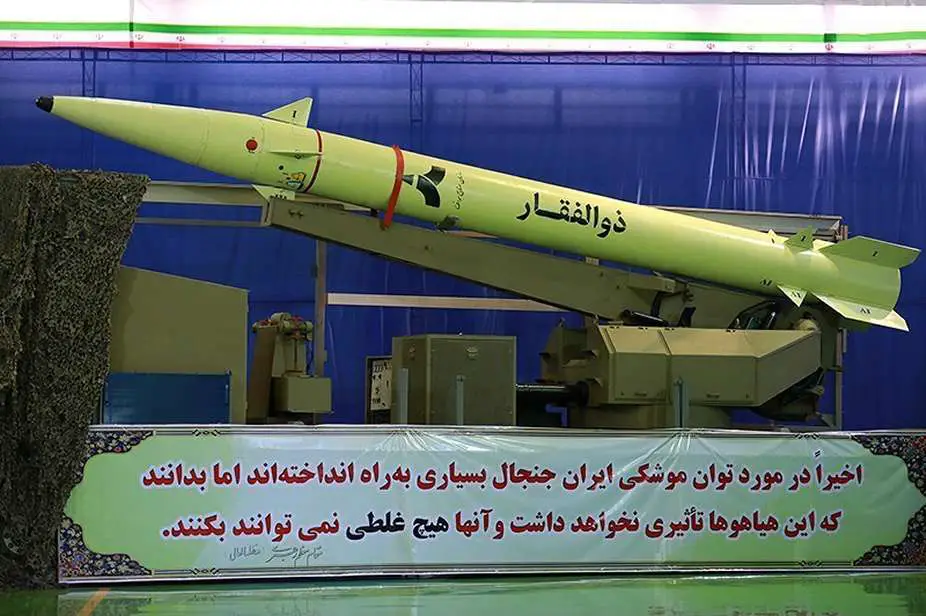Breaking news
Iran provides Zolfaghar short-range ballistic missiles to Russia for first time.
According to information revealed on February 21, 2024, by the Twitter account Osintdefender, senior Iranian officials have confirmed that since early January, Iran has transferred over 400 short and medium-range ballistic missiles to Russia, including hundreds of Fateh-110 variants and several Zolfaghar road-mobile solid-fuel short-range ballistic missiles, for their use during the war in Ukraine. They also announced that additional shipments will deepen military cooperation between the two countries in the coming months.
Follow Army Recognition on Google News at this link

Iran Zolfaghar short-range ballistic missiles (Picture source: Wikimedia)
This announcement, as the editorial team of Army Recognition already mentioned on January 10, 2024, coincides with reports that Russia has also begun receiving ballistic missiles from North Korea, highlighting Moscow's efforts to diversify its military acquisitions and deepen its strategic ties with other countries. This also suggests that Russia's domestic missile production may not meet battlefield requirements.
Despite significant development in its war industry in recent months, with plans to continue into 2024, Russia appears unable to meet the demand for military equipment, especially ballistic missiles which have been extensively used recently to strike Ukrainian infrastructure. Consequently, Russia is seeking international assistance, much like Ukraine, with Iran and North Korea responding to Russia's call.
Some sources suggest that these ballistic missiles could be Zulfiqars. The Zolfaghar, a short-range ballistic missile developed and manufactured in Iran, has been in service since 2017 and is notable for its technical and operational characteristics.
With a length of 10.3 meters and a diameter of 0.68 meters, the Zolfaghar is notably maneuverable for its category. It is powered by a single-stage solid propulsion system, recognized for its reliability and ease of maintenance compared to liquid propulsion.
The Zolfaghar has an operational range of about 700 kilometers, which, combined with its accuracy, allows it to hit medium-distance targets with an estimated margin of error of 100 meters (CEP). Accuracy is crucial for a missile's effectiveness, and the Zolfaghar employs a guidance system that combines inertial navigation (INS) with GPS positioning to increase the missile's accuracy in striking targets.
It is worth noting that the Zolfaghar is not the first Iranian weapon used by Russia in Ukraine. Since the beginning of the invasion of Ukraine in February 2022, Russia has deployed Iranian-made Shahed-136 suicide drones to conduct combat operations against the Ukrainian army. However, Iran has denied supplying weapons to Russia for use in Ukraine.
Defense and security relations between Moscow and Tehran have expanded since the early 1960s. In recent years, Russia has participated in joint projects with Iran for the development of weapons systems, solidifying long-standing military cooperation that seems to be intensifying in the Ukrainian theater today, raising new questions about the balance of power and military strategies in the region.



















